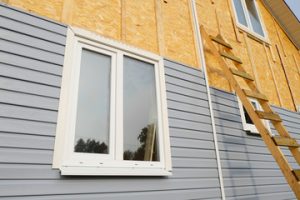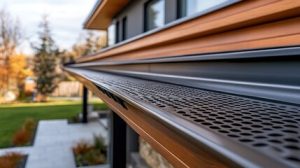A link is a clickable text on a Web page that redirects you to another resource. A link is often underlined or otherwise highlighted for easy identification.

Digital PR and SEO experts are divided on whether or not the practice of link building is dead. However, it is crucial to keep in mind that link building should always be done from a holistic SEO perspective. Contact Big Cheese Agency LLC for professional help.
The number of quality backlinks a website has is a major factor when it comes to search engine optimization (SEO). It determines which web pages will rank higher on SERPs and which ones will appear in featured snippets or thumbnails. However, it’s not all about quantity; quality is also key to success. This is why it’s important to follow best practices when engaging in link building activities, and avoid bad links and tactics that can hurt your ranking instead of help it.
One of the most important aspects of an effective on-page link-building strategy is keyword research. This involves looking for keywords that are relevant to your business, and determining how competitive they are. Using the information gathered, you can develop a list of target keywords that are most likely to drive traffic to your website.
Another important aspect of on-page link building is website structure. This includes having logically related URLs, ensuring that the content on each page is optimized for the target keyword, and making sure that all of the pages on your site are indexable by Google. Lastly, on-page optimization includes optimizing metadata. This includes titles, descriptions, and other tags that are invisible to visitors but impact SEO.
The most common way to build a link building strategy is through manual outreach. This is when you reach out to other websites and blogs in your industry and ask them to link to your content. This is a great way to increase your organic search traffic, and it’s also an effective way to improve your SERP rankings.
Other popular methods of link building include broken link building, social media marketing, and content marketing. These strategies involve creating and sharing high-quality content that is relevant to your audience. Broken link building involves finding broken links on other websites and pitching to them to replace them with a link to your content. Social media marketing and content marketing are great ways to promote your brand and get new visitors to your website.
Developing an effective online content strategy is essential to getting your local service business seen by potential customers. With a strong set of internal and external links, your site will rank higher on search engine results pages (SERPs), which means more traffic and more clients for you. By following the tips above, you can start developing a winning link-building strategy that will generate more traffic and leads for your business. Good luck!
Content Marketing
As the name implies, content marketing is a content-focused strategy that promotes links to your website and increases site traffic. Its focus on creating quality, relevant, and engaging content is a key element in SEO. When executed well, it can produce measurable results in terms of business growth and customer acquisition. Moreover, it can help develop brand authority, establish credibility and boost search engine rankings.
Content marketers are skilled in producing and promoting content assets that incorporate keywords for maximum impact and are aligned with the overall objectives of your business. They are also adept at utilizing link building tactics to promote these content assets on a larger scale. The goal of this approach is to drive targeted traffic and convert these visitors into sales.
While link-building strategies vary, the best practices include producing high-quality content that addresses the needs and desires of your target audience, as well as providing valuable information. This content is then shared on social media platforms, promoted via email, and distributed through other channels to maximize reach and visibility. In addition, creating evergreen content provides a steady stream of links and traffic over time.
High-quality content is an essential element of a successful website and can improve SEO, website visibility, and authority. However, it requires a significant amount of time and resources to create. Consequently, many businesses hire professional content writers to streamline this process and increase productivity. Unfortunately, these professionals tend to be expensive. Additionally, they may lack the expertise to implement a proper SEO strategy.
To overcome these challenges, you must find a balance between the needs of your customers and the goals of your business. This can be achieved by focusing on keyword research and targeting the most popular keywords in your niche. You should also use a variety of content formats, such as blogs, infographics, and podcasts. Additionally, it is important to consider the user intent of those searching for the topic you are targeting.
Another way to build links is through guest blogging. This can be a great way to expand your reach and attract new audiences. By leveraging different content formats and incorporating your URL into your signature, you can increase the likelihood of your content being linked to by other websites.
Using social media and collaboration with influencers can also amplify your content’s reach. Similarly, participation in industry forums and communities can encourage organic backlinks.
However, you should be careful when collaborating with other sites, as Google may view this practice as black hat link building and punish your website. In this case, you should seek out trusted and respected sites with similar audiences. This will ensure that your content is not seen as spam and will encourage others to link to your site. Ultimately, the key is to find a balanced approach that will maximize the results of your efforts.
Social Media
Link building is one of the most complex and challenging parts of search engine optimization. It involves acquiring hyperlinks from other websites to your own, which enhances your website’s credibility and improves its ranking in search engines. There are several ways to build links, including guest blogging and using social media platforms. However, each approach requires a different level of expertise and knowledge.
Fortunately, the right tools can help you streamline the process and increase your success rate. For example, a tool like Ahrefs Rank Tracker can help you monitor your keywords’ performance and find opportunities to boost your rankings.
Another key aspect of successful link building is creating engaging content that is share-worthy and relevant to your audience. You can also promote your content through social channels to attract attention and boost your visibility. In addition, using social media as part of your link building strategy can help you target niche audiences and connect with influencers.
The social media landscape offers many unique link-building opportunities that can significantly enhance your SEO rankings. In fact, many leading search engines now take social media signals into account when assessing the quality of your web pages. In order to leverage these opportunities, you must have a comprehensive strategy that combines traditional techniques with social media-specific tactics.
For example, by sharing your content across social platforms, you can attract the attention of bloggers, journalists, and industry websites. These sites can then include your content in their own articles and blogs, which may lead to backlinks from high-quality sources. In addition, you can use tactics such as ego bait to encourage other influencers to promote or feature your content on their platforms.
One of the most effective strategies for building links is to use your social media accounts to reach out to other website owners in your niche. Use tools such as BuzzSumo, Followerwonk, or Traackr to identify influencers in your field and connect with them on social media. This will make it easier for you to get in touch with them and discuss potential collaborations or backlinks.
Finally, you can also use social media to promote broken links on your site. This will increase the likelihood that other website owners will notice them and fix them. Additionally, you can use a tool such as a broken link checker to simplify the process.
Despite the challenges that come with link building, it is still an essential part of search engine optimization. It is important to implement a holistic approach and avoid spammy practices, which can damage your SEO performance. By focusing on quality over quantity, you can build an effective and sustainable link profile that will drive long-term success. Moreover, by incorporating these strategies into your marketing plan, you can achieve optimal SEO results without the need for expensive paid ads.








